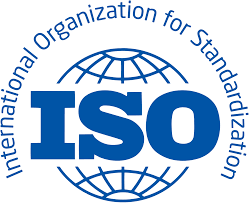ISO certification is a crucial milestone for organizations looking to improve their operational processes, enhance product quality, and boost customer satisfaction. In Nigeria, achieving ISO certification can significantly enhance a company’s credibility and marketability. This article outlines the steps to obtaining ISO certification in Nigeria, detailing the necessary requirements, processes, and potential benefits.
Understanding ISO Certification
ISO (International Organization for Standardization) develops and publishes international standards. ISO certification is an affirmation that an organization’s management system, manufacturing process, service, or documentation procedure has all the requirements for standardization and quality assurance. ISO certifications can cover various aspects, including quality management (ISO 9001), environmental management (ISO 14001), and occupational health and safety management (ISO 45001), among others.
Benefits of ISO Certification
- Enhanced Credibility: ISO certification demonstrates an organization’s commitment to quality and continuous improvement, making it more attractive to customers and stakeholders.
- Improved Efficiency: Implementing ISO standards can streamline processes, reduce waste, and increase productivity.
- Increased Customer Satisfaction: By focusing on quality and consistency, organizations can meet customer expectations more effectively, leading to higher satisfaction rates.
- Market Advantage: In a competitive market, ISO certification can distinguish a company from its competitors, enhancing its reputation.
Steps to Obtain ISO Certification in Nigeria
Step 1: Identify the Relevant ISO Standard
The first step in the certification process is to identify which ISO standard is most relevant to your organization. Common ISO standards include:
- ISO 9001: Quality Management Systems
- ISO 14001: Environmental Management Systems
- ISO 45001: Occupational Health and Safety Management Systems
Choose a standard that aligns with your business objectives and operational processes.
Step 2: Conduct a Gap Analysis
Before pursuing certification, conduct a gap analysis to identify areas where your organization currently falls short of the chosen ISO standard. This assessment involves reviewing existing processes, procedures, and policies. It helps to understand the changes necessary to comply with the ISO standard and provides a clear roadmap for the certification journey.
Step 3: Develop and Implement a Management System
Once the gap analysis is complete, develop a management system that meets the requirements of the selected ISO standard. This system should include:
- Policies and Procedures: Documented policies and procedures that align with ISO requirements.
- Resource Allocation: Assign roles and responsibilities to ensure adequate resources are allocated for effective implementation.
- Training: Train staff on the new policies and procedures to ensure everyone understands their roles in achieving compliance.
Implementation is crucial, as it involves integrating the new management system into daily operations and ensuring it becomes part of the organizational culture.
Step 4: Internal Audit
Conduct an internal audit to assess the effectiveness of the implemented management system. This audit will help identify any non-conformities and areas for improvement. An internal audit should be systematic and objective, evaluating whether processes comply with documented procedures and ISO requirements.
Use the findings from the internal audit to make necessary adjustments and improvements to the management system. It’s also advisable to document the audit process, findings, and corrective actions taken.
Step 5: Management Review
After completing the internal audit and implementing corrective actions, conduct a management review. This review should evaluate the management system’s performance and effectiveness, identify areas for further improvement, and ensure that the organization is on track for certification.
Management reviews are essential to maintaining commitment from top management and ensuring that quality objectives align with the organization’s strategic goals.
Step 6: Choose a Certification Body
Selecting an accredited certification body is a critical step in the certification process. In Nigeria, several bodies are authorized to issue ISO certifications. Ensure that the chosen certification body is recognized and accredited by relevant authorities. Research the certification body’s reputation, experience, and approach to the certification process.
Step 7: Certification Audit
Once you have selected a certification body, you will undergo a certification audit. This audit will assess the effectiveness of your management system in complying with the chosen ISO standard. The audit typically involves two stages:
- Stage 1 Audit: The auditor reviews your documentation and ensures that you have established and implemented the necessary processes. This stage may also involve a preliminary assessment of compliance with ISO requirements.
- Stage 2 Audit: In this stage, the auditor conducts a thorough assessment of the implemented management system. This includes reviewing records, interviewing employees, and assessing processes. The aim is to verify that the system effectively meets ISO standards.
Step 8: Corrective Actions
If the auditors identify any non-conformities during the certification audit, you must take corrective actions to address these issues. Document the non-conformities, the actions taken to resolve them, and the results of those actions. Once the certification body is satisfied that all issues have been addressed, they will proceed with the certification process.
Step 9: Issuance of Certification
Upon successful completion of the certification audit and resolution of any non-conformities, the certification body will issue your ISO certification. This certification is usually valid for three years, during which your organization must maintain compliance with the ISO standard.
Step 10: Surveillance Audits
To ensure ongoing compliance, most certification bodies conduct surveillance audits at regular intervals (typically annually) throughout the certification period. These audits verify that your organization continues to adhere to ISO standards and maintain the effectiveness of its management system.
Conclusion
Obtaining ISO certification in Nigeria is a strategic move that can enhance your organization’s reputation, improve operational efficiency, and increase customer satisfaction. By following the outlined steps—identifying the relevant standard, conducting a gap analysis, implementing a management system, and undergoing audits—organizations can navigate the certification process successfully. With dedication and commitment, achieving ISO certification can lead to substantial benefits for your business and a competitive edge in the market.




